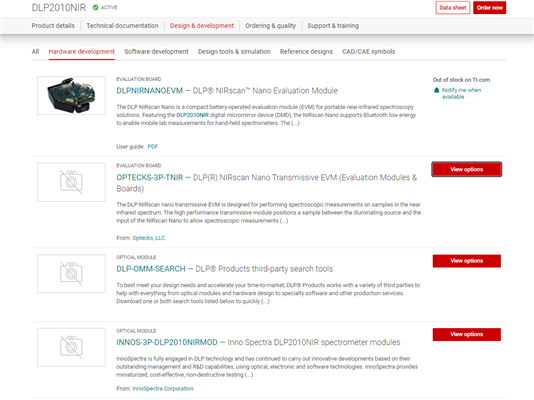Other Parts Discussed in Thread: DLPA200, DLP2010NIR, CCSTUDIO, DLPNIRNANOEVM, DLPDLCR230NPEVM
We're beginning to design a system using DMDs for spectroscopy. The DLP2010NIR, DLPC150, and DLPA200/DLPA 2005, from my research, seem to be what we'd want to incorporate into the system.
We do not wish to use the DMDs in the typical manner described in the sample documentation, rasterizing a vertical line across the incident spectrum. Instead, we wish to use it to select portions of a sample to be measured, by blacking out and selecting portions of a sample, and feeding that into a point spectrometer. So, we'd do this by programming blocks of mirrors to be on or off, based on which portion of the sample we want to image, as the DMD reflects imaging light back into the spectrometer.
So my question is about the best products to order to set this up initially. Obviously, we would need the DMD, PMIC, and DLP Controller. Are there demo boards available that would let us install the DLPA200 and DLPC150 onto them, connect them to the DMD, and then program the mirrors according to our wishes (presumably with CCSTUDIO)?
I see there's the DLPNIRNANOEVM NIRscan evaluation module, which seems to include parts similar to what I'm looking for. But, many of the parts on that we don't need, and we'd want to program the DMD in a way that doesn't seem to be immediately supported the way that the NIRscan module comes set up for, so we would have to completely disassemble (and reprogram?) that to get the function we want to demonstrate, which we'd rather not do. But, if we could acquire similar parts to the ones contained in that, especially the boards supporting the PMIC and controller, that seems to me like it would be a better option.


